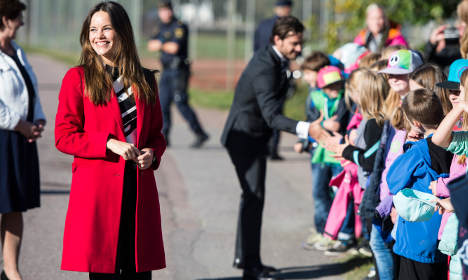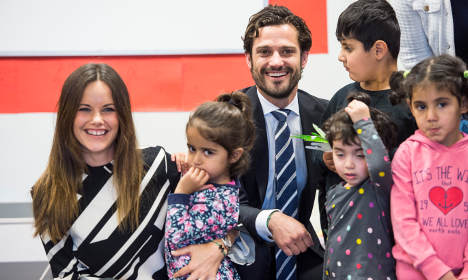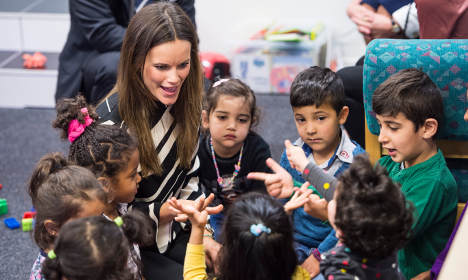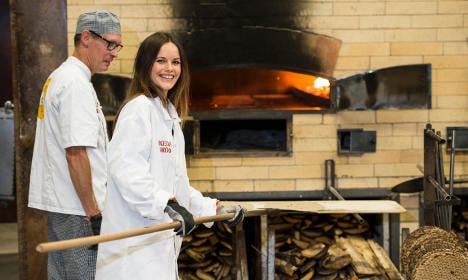The 30-year-old princess, formerly known as Sofia Hellqvist, grew up in the mythical Älvdalen region of Dalarna in north-western parts of central Sweden.
On Monday, she returned to her roots on a two-day visit to Dalarna with her prince husband in their first official trip since the royal couple's high-profile wedding this summer.

Princess Sofia and Prince Carl Philip greeting crowds. Photo: Pontus Lundahl/TT
“It feels great,” the princess told photographers waiting to snap her pictures. “This is the husband,” she joked, pretending to introduce Carl Philip to the excited crowds.
The couple met refugee children at an asylum centre in the town of Borlänge on Monday, before heading onwards to Säter, Stora Skedvi and Falun to talk to Swedish businesses.

Sofia and Carl Philip at an asylum centre for refugee children. Photo: Pontus Lundahl/TT
On Tuesday they are set to travel to a Sami village – the indigenous people of Scandinavia – in the mountains of Dalarna as well as Sofia's hometown of Älvdalen, a small community of only some 2,000 residents.

Sofia playing with the children at the asylum centre. Photo: Pontus Lundahl/TT
Älvdalen is known for its preservation of an old Viking dialect called Elfdalian, which is still spoken by many in the area today.
“It is extra special to us. And I think everyone here feels that she's kind of 'our' princess,” Lotta Larsson, head of communications for Dalarna county council, told the TT newswire ahead of the royals' visit.

Sofia baking Swedish crisp bread at Stora Skedvi bakery. Photo: Pontus Lundahl/TT
Sofia became Sweden's newest princess after she married Carl Philip at a lavish ceremony in June 2015.



 Please whitelist us to continue reading.
Please whitelist us to continue reading.